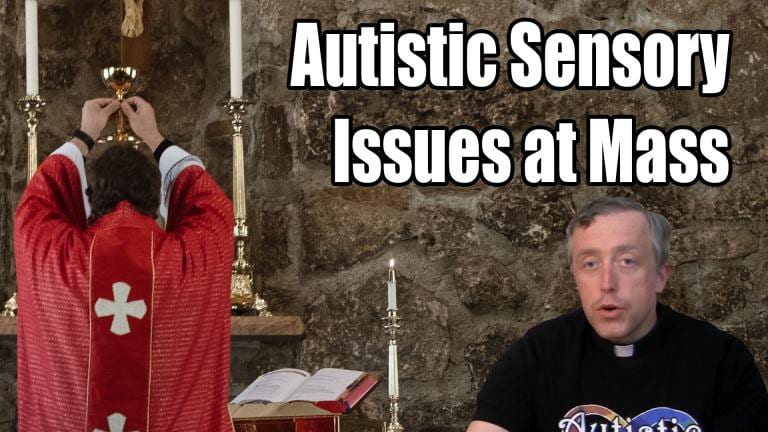I’m unapologetically Catholic. The Catholic Church is the vessel of salvation. But, at the same time, I think we can at times learn from other Christians. A recent article in the Victoria Advocate (Texas) by a Methodist spoke about autism-friendly – or better sensory-friendly – cry rooms. I’ll look at the article part by part, and make a few comments as I go.
Cry Rooms in Churches

“Crying Rooms” came into vogue at the peak of the baby boom. This is a room near the sanctuary with windows to see worship and maybe even a speaker to hear worship. However, the group in worship can no longer hear a dysregulated child.
These have evolved a bit since the 1950s: newer churches offer a large lobby with even larger windows. Some caregivers really appreciate this kind of space. Others would rather the congregation be more understanding. Others will never step into a place of worship because of fear of judgment.
I think we need to recognize this architectural reality of church design. It is often the best place to make a sensory-friendly space so those with sensory issues can attend Mass/service.
Ideas for Sensory-Friendly Cry Rooms
Sami Pack-Toner, a Methodist minister and the author of the article, continues:
When looking at sensory and processing struggles, worship is often not a child-friendly space. Even with coloring pages and little bags full of treats and stickers, worship can have strange smells, loud instruments or flashing lights, large crowds of mostly strangers, and patterns that are difficult to learn and follow. Sensory overload cannot easily be fixed, especially by a young child.
One of the biggest actions a church community can make is to become more aware of the journey of parent caregivers with disabled children and medically complex children. Building awareness will help these families feel seen. They will feel safe and accepted as they are. This will include acknowledging that though a caregiver may leave worship with a dysregulated child, they may not want to. They may be worried about offending others, or they have past experiences of shame and judgment. The best way to know is to make connections with each family.
This mirrors advice given by others and seems like a good idea. Her term of having a rummage sale in cry rooms might come off awkwardly, but often to provide space for autistics to meet their sensory needs, it will look like this. Sami also notes that often times autistics, given such a sensory-friendly cry room, will go in and out during Mass/service as they need to regulate sensory input.
Concluding Notes
Sami Pack-Toner includes more about how to welcome autistics using sensory-friendly cry rooms in her article. She even includes some testimonials. I would give one warning though: the article quotes the president of the National Council on Severe Autism, this group seems suspect so I would not recommend them. (Two more links: Jill saying questionable things & the most extensive run down on their issues I found.)
I think this Methodist pastor presents something that can be helpful for Catholics too in turning cry rooms into sensory-friendly rooms for autistics to be able to attend Mass easier.
Shameless plug: If you are interested in the intersection of faith and autism, check out my book God Loves the Autistic Mind: Prayer Guide for Those on the Spectrum and Those Who Love Us.









